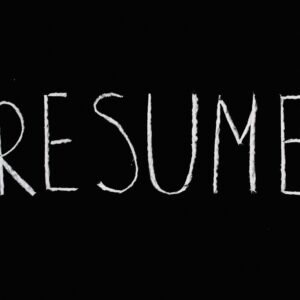Introduction
Switching careers can be both exciting and challenging, presenting individuals with the opportunity for personal and professional growth. However, amidst this excitement lies the concern of having one’s application overshadowed by candidates with more experience. Particularly in the aftermath of the pandemic, where approximately 75% of professionals are considering or actively changing careers, the ability to effectively write a career change resume has emerged as a crucial skill for prospective job seekers.
What is a Career Change Resume?
A Career Change Resume signifies a candidate’s intention to transition from their current professional industry to a new field. It serves as a comprehensive document highlighting the candidate’s skills, experiences, qualifications, and abilities tailored to meet the requirements of the desired role within a different industry or sector.
Navigating the Challenges
Crafting a Career Change Resume presents unique challenges, particularly in accurately representing one’s skills and experiences without the assistance of professional resume writers. Given the distinct practices and standards associated with a career change resume, ensuring its compliance with Applicant Tracking Systems (ATS) is imperative for success in a competitive job market.
Essential Components for Career Change
Before delving into the specifics of resume writing, it’s essential to understand the key elements required to facilitate a successful career transition:
-
- Personal Branding Materials: Including a well-crafted resume, LinkedIn profile, and tailored cover letters tailored to the targeted industry.
-
- Qualifications and Training: Acquiring relevant qualifications or undergoing training pertinent to the desired industry or role.
-
- Transferable Skills: Identifying and emphasizing transferable skills, such as communication, leadership, problem-solving, and time management, that are applicable across different job contexts.
-
- Industry Connections: Leveraging existing connections within the targeted industry to gain insights and potential opportunities.
-
- Peer Support: Seeking guidance and advice from individuals who have successfully transitioned from a similar job title or industry to the desired one.
- Peer Support: Seeking guidance and advice from individuals who have successfully transitioned from a similar job title or industry to the desired one.
Structuring a Career Change Resume
A Career Change Resume typically comprises three main sections:
-
- Qualifications Summary: Unlike a traditional Professional Summary, the Qualifications Summary focuses on showcasing 4 to 6 key skills relevant to the targeted position. It begins with a Branding Statement highlighting the candidate’s previous experience, followed by lines emphasizing transferable skills tailored to the new role.
-
- Professional Experience: This section highlights transferable skills and experiences, focusing on tasks and accomplishments that align with the requirements of the desired position. It’s crucial to generalize previous industry-specific details and prioritize content relevant to the targeted sector.
-
- Education: Placing education strategically, particularly if it aligns with the qualifications sought in the new role, immediately following the Qualifications Summary.
- Education: Placing education strategically, particularly if it aligns with the qualifications sought in the new role, immediately following the Qualifications Summary.
Title and Objective Statement
In a Career Change Resume, the traditional title is omitted in favor of an objective statement. This statement, positioned after the Qualifications Summary, conveys the candidate’s readiness to leverage transferable skills and contribute to the success of the organization in the desired position.
Choosing ATS-Compliant Formats
Selecting an ATS-compliant format is essential to ensure that the resume passes through automated screening processes effectively. While specific examples of such formats are not provided here, it’s recommended to utilize templates designed to optimize visibility and readability across various Applicant Tracking Systems.
Examples of Career Change Resume
Example 1: Client Transition: Kindergarten Teacher to Therapist Strategic Approach:
-
- Developed client’s previous role by conducting strategic research and utilizing industry knowledge.
-
- Prioritized education related to occupational therapy immediately after the Qualifications Summary.
-
- Highlighted transferable skills necessary for the position of Therapist, emphasizing the candidate’s readiness for the transition.
- Highlighted transferable skills necessary for the position of Therapist, emphasizing the candidate’s readiness for the transition.
Conclusion
Crafting a Career Change Resume requires careful consideration and strategic planning to effectively showcase one’s suitability for a new role or industry. By following the guidelines outlined in this guide, individuals can navigate the challenges of career transition with confidence and increase their chances of securing their dream job in a different field.




